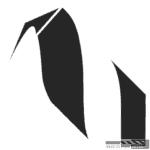You are using an out of date browser. It may not display this or other websites correctly.
You should upgrade or use an alternative browser.
You should upgrade or use an alternative browser.
Would Railroad track...
- Thread starter Mirac
- Start date
- Replies 15
- Views 1,548
I have no personal knowledge of the subject, but I found this: https://makeitfrommetal.com/what-grade-of-steel-is-railroad-track-uses-and-tips/
This is the fun part: What can you make with the stuff?
This is actually pretty popular metal to work with among knife makers. It’s great for forging and heat treats really well.
It can take a little bit of effort to get into a good shape for knife making, but once you do it’s a carbon steel that’s great for choppers and will definitely hold an edge.
Practical Uses of Train Track Steel
This is the fun part: What can you make with the stuff?
This is actually pretty popular metal to work with among knife makers. It’s great for forging and heat treats really well.
It can take a little bit of effort to get into a good shape for knife making, but once you do it’s a carbon steel that’s great for choppers and will definitely hold an edge.
Last edited:
Let me give it some thought. It wouldn’t take a very large piece to forge a knife. How big a knife you thinking. I love making Bowie’s but I make smaller knives as a general rule.
Let me give it some thought. It wouldn’t take a very large piece to forge a knife. How big a knife you thinking. I love making Bowie’s but I make smaller knives as a general rule.
A small Knife for bird cleaning/ fish cleaning would be awesome.
I've got a big camp chopper and hunting skinner. A complement to those is perfect.
I think there's still about 4-6 feet rail (could be more buried) left in the river bank
I also spied some old square rebar down there, if that is something useful or any good to you.
Think about , if you can make use of it we'll get it to you.
What about railroad spikes ? Any use for those ?
Sorry if this is a hijack; I just saw it as related...
No high jack, come on in.
Would also be interested in a short piece.How much for a short section of rail for me to use as a anvel?
A cool question.
I googled it...railroad track is a medium carbon steel (1084 or equivalent hot rolled steel, 0.7% to 0.8% carbon and 0.7% to 1% manganese). Great for heat treating and described as "tough, through-hardening, and forgable".
Keep in mind this if for track not much older than about two decades or so. Older than that and you may have some less standardized grade of steel on your hands. You can test it to see, and I'll leave the details for that in the link below. (The test basically checks to see if it's heat treatable, not specifically what the exact alloy/grade is.)
An article I found said 1084 can usually be heat treated up to 65 Rockwell C, but is very brittle at that hardness. An ideal hardness would be 60 to 62 Rc (tough enough to resist cracking, but really good wear resistance). But that's ideal for use as a train track and the load characteristics required for that. So heat treating higher than 62 Rc for knives might be in order.
So yeah...sounds like an excellent steel for knives.
Here's an article for you which discusses how to go about cutting and working with railroad track:

 makeitfrommetal.com
makeitfrommetal.com
I googled it...railroad track is a medium carbon steel (1084 or equivalent hot rolled steel, 0.7% to 0.8% carbon and 0.7% to 1% manganese). Great for heat treating and described as "tough, through-hardening, and forgable".
Keep in mind this if for track not much older than about two decades or so. Older than that and you may have some less standardized grade of steel on your hands. You can test it to see, and I'll leave the details for that in the link below. (The test basically checks to see if it's heat treatable, not specifically what the exact alloy/grade is.)
An article I found said 1084 can usually be heat treated up to 65 Rockwell C, but is very brittle at that hardness. An ideal hardness would be 60 to 62 Rc (tough enough to resist cracking, but really good wear resistance). But that's ideal for use as a train track and the load characteristics required for that. So heat treating higher than 62 Rc for knives might be in order.
So yeah...sounds like an excellent steel for knives.
Here's an article for you which discusses how to go about cutting and working with railroad track:

What Grade of Steel is Railroad Track? Uses and Tips | Make it From Metal
If you're anything like me, when you see a chunk of metal laying around you're instantly wondering what you can make from it. Railroad tracks…
Last edited:
I think you will find more makers using the spikes for blades. I understand they are easier to work with. You normally find two types. One will have HC (High Carbon) imprinted on the side of the spike and heat treats very well.



